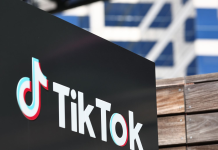
A few thousand feet can feel much farther when that distance separates a house from the closest wired broadband – and the cost to extend connectivity reaches tens of thousands of dollars.
This isn’t a new problem: ”In both my FCC and post-FCC life, I’ve heard these stories both in real life and over social media numerous times,” emailed Gigi Sohn, an advocate for more equitable broadband access and, earlier, an adviser to former Federal Communications Commission chairman Tom Wheeler.
But the coronavirus pandemic and the resulting push to work from home have made it worse. And while internet providers have temporarily lifted data caps and waived late-payment fees, no such organized help has reached could-be customers like Christina Deese, a remote-working office manager in Adel, Georgia.
She and her husband bought a house believing they could get service from their former provider, Mediacom, at their new abode.
Not quite, the Blooming Grove, New York, cable operator replied after they moved in. Deese reported that after some negotiation, Mediacom representatives said they’d have to pay $32,000 to get service extended.
The Deeses declined that steep cost and opted for Viasat satellite-delivered Internet, which costs $220-plus a month and imposes data limits that rule out video streaming.
Mediacom spokesman Tom Larsen offered a detailed reply via email, noting that the $32,000 to extend service by 3,078 feet covered not just stringing wires from poles but adding a new node between its fiber-optic network and the coaxial cable going to homes.
“That number represents labor and equipment without any profit to Mediacom,” he said. “Since this is the only home requesting service, this homeowner is being quoted the entire amount.”
He added that Mediacom engineers saw six houses they could connect with this extension, far below the 30 homes-per-mile buildout thresholds most localities set.
“That quote does seem reasonable,” said Dane Jasper, CEO of Santa Rosa, California-based Sonic. He said in a Twitter direct message that he budgets from $75,000 to $100,000 a mile for construction, some of which reflects higher costs of operation in the Bay Area.
Tom Bridge, partner at the Washington tech consultancy Technolutionary, suggested bridging the gap with a pair of Ubiquiti LiteBeam AC long-range wireless routers: “Aim them at each other and they’ll go for kilometers.”
Larsen said that allowing shared access would conflict with Mediacom’s obligations under the Digital Millennium Copyright Act to address complaints of copyright infringement by its customers: “If we have multiple households sharing a single account, then this becomes an enforcement nightmare.”
Cathy Gellis, a lawyer who frequently handles digital-copyright cases, said she understood why internet providers would fear shared-usage scenarios but noted that they already accept some risk by serving households with multiple users. “It isn’t clear that their hands are tied like this,” she wrote in an email.
Any other options?
At some point, 5G wireless or SpaceX’s growing constellation of low-Earth-orbit Starlink broadband satellites may offer alternatives to subscribers like Deese. Sohn also urged freeing municipalities to build their own broadband.
But for now, the problem of people who can see the nearest broadband connection but can’t get it at any reasonable price remains one we not only haven’t solved but haven’t even properly documented.
“It’s time for the FCC to set up a system to collect these stories from around the country and identify patterns in construction charges,” FCC commissioner Jessica Rosenworcel said in an emailed statement. “Then we need to come up with solutions that help get more people connected in more places without these excessive fees.”











